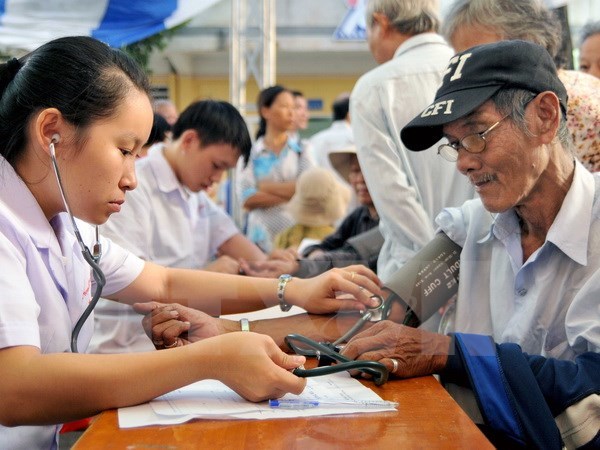Coping with an aging population in Vietnam
To manage the trend of the aging Vietnamese population it’s important for people to rethink their education, work, and retirement plans, says the General Department of Population and Family Planning.

The good news is that people are today living healthier and longer lives, said Nguyen Van Tan, deputy head of the Department, noting that lifespans have increased by 33 years just over the past five decades.
In 1960 the average life expectancy in Vietnam was 40 whereas in 2012, the latest year for which statistics are available, it was 73.
Most importantly for younger generations, by reshaping their education plans, they could see their participation in the workforce last longer, which would increase their lifetime earnings and standard of living.
It would also be a virtual gold mine for them later in life during retirement.
Citing statistics from the World Bank he noted that within 20 years one in seven Vietnamese would be aged 65 or older, and this would create a wider gap between the ‘haves’ and ‘have-nots’ in the absence of proper planning.
Mr Tan made the comments at a symposium in Hanoi touching on critical issues related to the country’s changing population trends such as its impact on the macro economy, the role of women, health, retirement and societal issues in general.
In addition, at the conference, Mr Tan outlined priorities for the Department of Population and Family Planning over the coming years as they relate to the role of women; health inequality; sustainable development; climate change; and using demographic data to better understand the country’s population dynamics.
The country is at a demographic crossroads, he said. It is experiencing shifting demographics due to improvements in health care and rapid aging for which the plight and future welfare of the poor and women, in particular, are key factors.
The antithesis to proper planning is a Vietnamese society that will have yet wider gaps in income, opportunity, education, and health in the coming years compared to that which exists today.
Without adequate planning the country in 20 years could find itself in a similar predicament that Germany, Japan, and Thailand all face today, critically short of younger workers to support the cost of healthcare and other societal needs of an aging populace.
Over time, the younger generation of today, which is generally perceived as a global competitive advantage, will mutate into a disadvantage in terms of the country’s ability to compete in the economic arena.
By focusing on the priorities he outlined, Mr Tan argued that the country could avoid the pitfalls of the aging demographic— but cautioned that there are still far too many that deny an aging population presents a problem.
He suggested that these people miss the larger point.
The central problem, he underlined, is that the Vietnamese life cycle where education occurs early in life, followed by long years of work with little leisure time and concludes with retirement and presumably more leisure at the end, is outdated.
In the case of Vietnam, this life cycle structure creates a mismatch resulting from fewer people in the work force that must support a larger proportion of those in retirement.
The answer must rely on improved education and continued contributions from a healthier more highly skilled older population, which requires the government and people to better manage and plan for the difficulties of an aging population.
The challenges are not going to go away, he concluded./.
VNF/VOV
Recommended
 National
National
Vietnam News Today (Jun. 6): Foreign Investment in Vietnam Surges in Five Months
 National
National
Vietnam News Today (Jun. 5): PM sets off for attendance at UNOC 3 in France, official visits to Estonia, Sweden
 National
National
Vietnam News Today (Jun. 4): Vietnam - Promising Candidate for Southeast Asia’s Next Powerhouse
 National
National
Shangri-La Dialogue 22: Vietnam Highlights Some Issues of Ensuring Stability in a Competitive World
 National
National
Vietnam News Today (Jun. 3): PM Pham Minh Chinh to Attend UN Ocean Conference, Visit Estonia, Sweden
 National
National
Vietnam News Today (Jun. 2): Vietnamese Trade Mission Sounds Out Business Opportunities in United States
 National
National
Vietnam News Today (Jun. 1): Vietnamese, Japanese Firms Foster Partnership
 National
National
